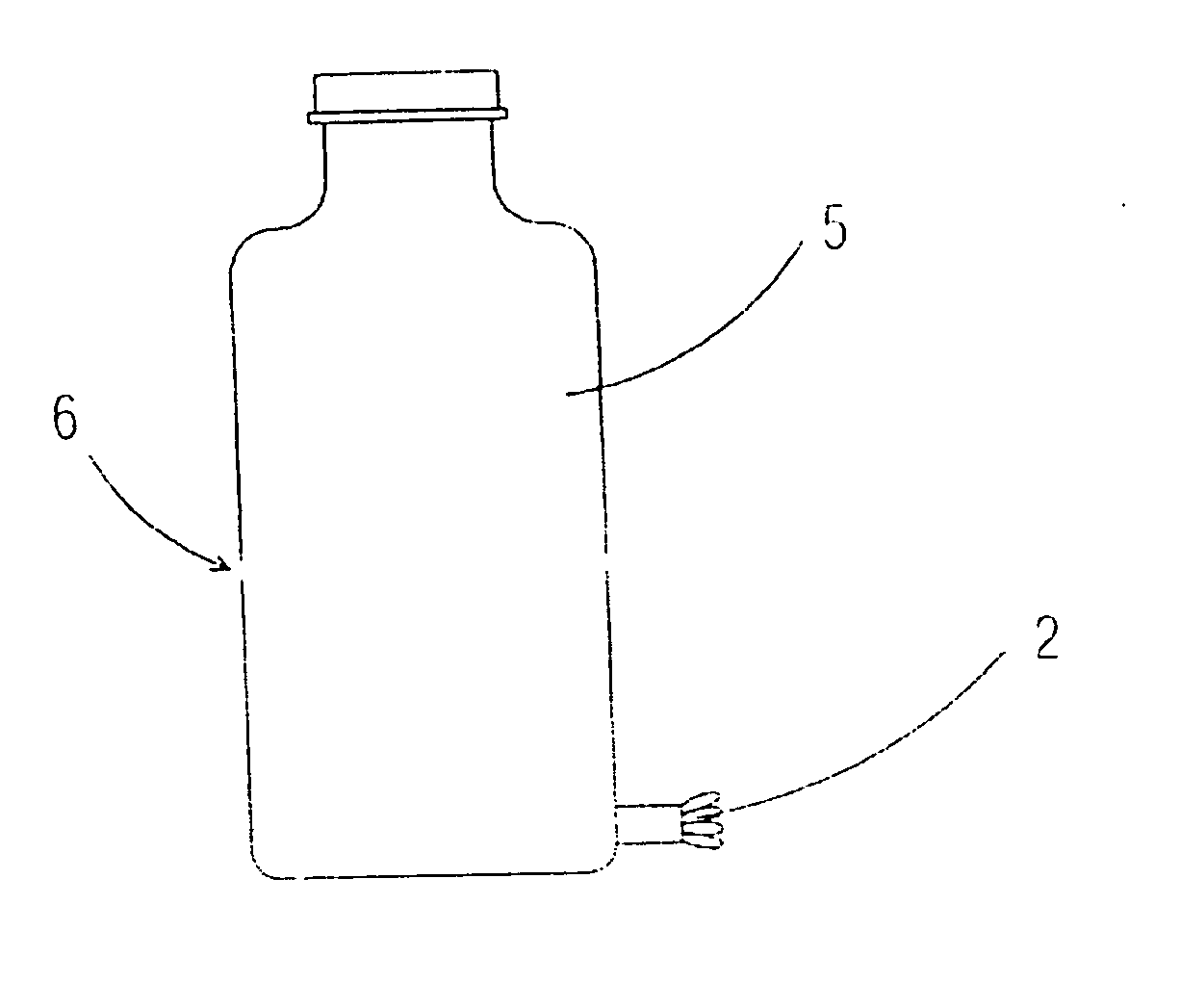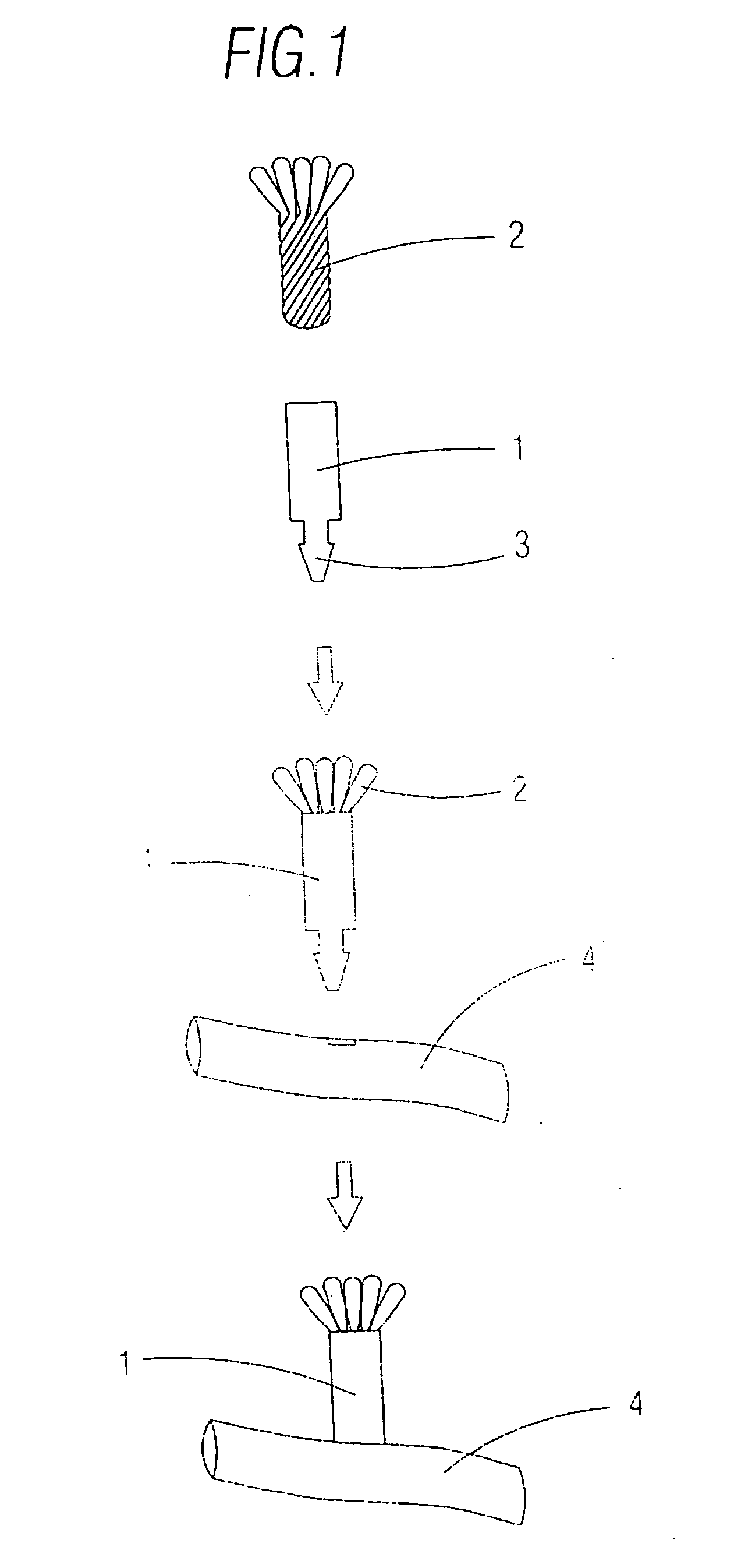Device and container for irrigation by capillarity
a technology of capillary water and device, applied in the direction of watering device, self-acting watering device, horticulture, etc., can solve the problems of stream decreasing until it is completely blocked, and not providing a constant liquid flow ra
- Summary
- Abstract
- Description
- Claims
- Application Information
AI Technical Summary
Benefits of technology
Problems solved by technology
Method used
Image
Examples
second embodiment
[0016] According to the invention, the means for controlling the vacuum degree of the upper part of the container consist of wicks of tissue similar to those used in irrigation devices. Said wicks are provided in the side area of the container, above the connection level of the irrigation device. Thus, calcareous obstructions are avoided and air circulates through the wick, whereby the hydrostatic pressure is minimum due to the proximity of the air outlet and inlet drip.
[0017] According to another embodiment of the invention, the means for controlling the vacuum degree of the upper part of the container consist of a conduct that runs through the container, the upper end of which is located above said container, the lower end of which is located at a level close to the level of connection of the irrigation device. In this way, air is made to reach a slightly upper level, thus achieving a minimum positive hydrostatic pressure that in some occasions can be negative.
[0018] Preferably, ...
first embodiment
[0024]FIG. 2 is a view of the irrigation container;
[0025]FIG. 3 is an elevation view of a second embodiment of the irrigation container;
third embodiment
[0026]FIG. 4 is an elevation view of the irrigation container;
[0027]FIG. 5 is an elevation view of another embodiment of the irrigation container according to the invention and;
[0028]FIG. 6 is an elevation view of an irrigation container that includes a connection to a supply network.
DESCRIPTION OF A PREFERRED EMBODIMENT
[0029] The irrigation container by capillarity of the flow rate required by plants, such as by drip irrigation or similar, includes means for providing irrigation liquid to the soil by capillarity, said means being connected to a conduct or irrigation container. Said means for providing irrigation liquid to the soil include a set of fibres of synthetic tissue arranged inside a rigid support fixed to the conduct or irrigation container, thus obtaining an irrigation device by capillarity that provides a constant liquid flow rate.
[0030] The invention is based on the fact that there is not a high hydrostatic pressure being supplied to the devices, the pressure being a...
PUM
 Login to View More
Login to View More Abstract
Description
Claims
Application Information
 Login to View More
Login to View More - R&D
- Intellectual Property
- Life Sciences
- Materials
- Tech Scout
- Unparalleled Data Quality
- Higher Quality Content
- 60% Fewer Hallucinations
Browse by: Latest US Patents, China's latest patents, Technical Efficacy Thesaurus, Application Domain, Technology Topic, Popular Technical Reports.
© 2025 PatSnap. All rights reserved.Legal|Privacy policy|Modern Slavery Act Transparency Statement|Sitemap|About US| Contact US: help@patsnap.com



